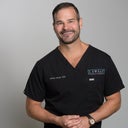Currently I like the way the upper pole feels, but hate the way lower pole feels (so much so that I want them taken out). Would changing to unders fix this? Silicone 286cc
Answers (10)
From board-certified doctors and trusted medical professionals
Dr. Marc J. Salzman, MD, FACS (retired)
Board Certified Plastic Surgeon
Answer
More Breast Implant Revision Questions
See all Breast Implant Revision Q&AWE SEND PRETTY
EMAILS
What’s trending? Who’s turning heads? Which TikTok myths need busting? We’ve got you. No fluff, no gatekeeping—just real talk. Get our free, unfiltered newsletter.




